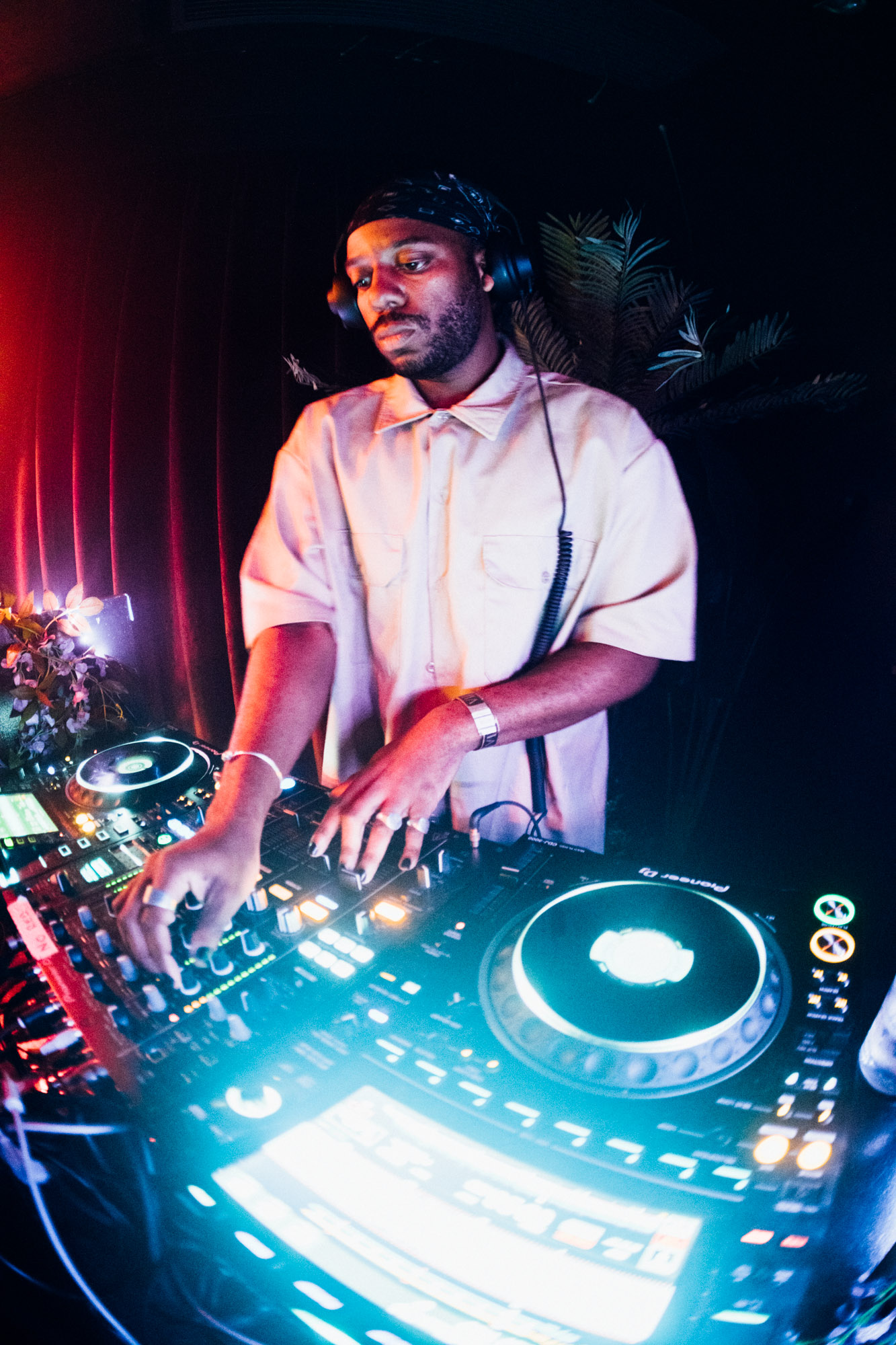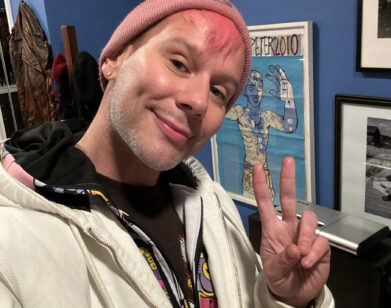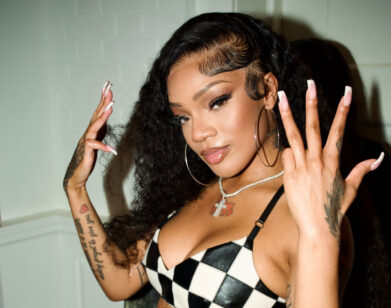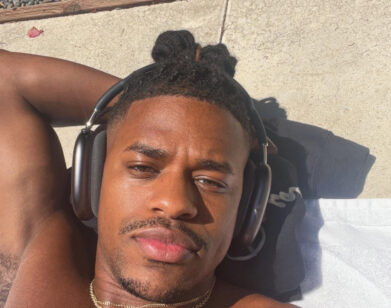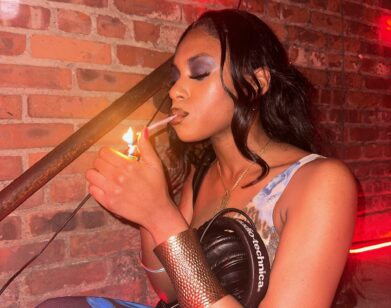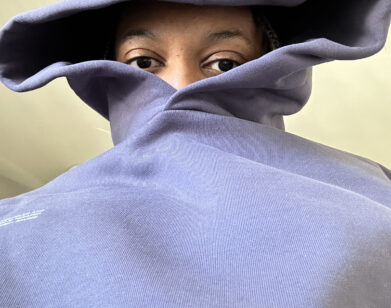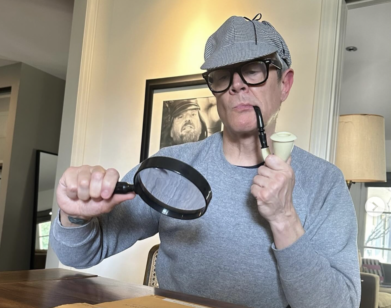HEY MR. DJ
MoMA PS5 on Beyoncé, House Anthems, and Rainbow Capitalism
“BREAK MY SOUL,” Beyoncé’s latest track, a house music revival that features Big Freedia, the legendary queer Black icon known for popularizing New Orleans bounce, has the internet aflame. In fact, many of its reviewers have minimized the legacy of house music, a genre with deep roots in the Chicago and Detroit nightlife scenes that fueled the queer Black liberation movement in the ’80s. Since then, the genre has been adapted and appropriated by so many different scenes to the point where much of the genre’s current (and often white) fanbase is unaware of its radical origins. Reactions to the highly-anticipated single have also been complicated by the fact that it arrived on the heels of Drake’s seventh studio album, Honestly, Nevermind, which references house subgenres, reflecting a larger trend toward dance music in mainstream pop and hip-hop. The two releases left many of the house scene’s better-informed fans feeling ambivalent about whether Drake’s and Beyoncé’s latest offerings are earnest tributes or well-timed imitations. To help us make sense of house’s mainstream revival, we sat down with Aloiso Wilmoth, A.K.A MoMA PS5, the Indiana-based music historian, cultural critic, and DJ right before his gig with Shygirl over Pride weekend. Here, the self-declared “Techno Dadaist” breaks down the influences in Beyoncé and Drake’s new music, and sheds some light on the competing narratives that surround house and dance scenes. He even created a new mix, exclusive to Interview, to help us educate ourselves.
———
ERNESTO MACIAS: What was your first reaction to Beyoncé’s new song?
MOMA PS5: I mean, I was excited and hype for obvious, cultural reasons. But before it dropped, people were telling me “Beyoncé is going to release a house, dance floor album.” I was like, “Okay, kind of long overdue, obviously. Like, the diva queen. Hello, you’re supposed to be releasing house anthems off the jump.” But honestly, after hearing Drake’s album, I think Beyoncé’s approach to that single is falling flat. It’s good to jump on this dance music trend, but I was expecting a little bit more flare.
MACIAS: The reactions have been mixed, depending on what part of the internet you look at. To the trained ear, the song is rooted in house music. Why do you think people were so shocked that she did that?
MOMA PS5: Historically, in the North American dance music scene, when people release music at her level, it tends to be an anthem. When we look at the history of house music, especially for Black female vocalists, you gotta come with it. Especially if you’re sampling someone like Robin S. or hinting at queer culture, you gotta really bring it. You got to give it your all. I just feel like this song was riding a trend without actually contextualizing it. Maybe that’s just me being overly critical as a dance music historian, but I was expecting her to come with it.
MACIAS: For people who are not in the dance music scene, it probably felt like a huge departure from Bey’s typical sound. Can you explain, for those who don’t know, the origins of house music? Why is it important that she goes hard if she is touching on those roots?
MOMA PS5: Beyoncé has a huge, queer fan base, and house music’s origins lie within Black, queer communities from Chicago, and it has connections to Disco. When you pander to that deeply-rooted community, it’s important to connect to that history. Whoever’s doing her creative direction and marketing understands her fan base. Everybody knows that, first and foremost, her gay audience is going to be the one that is going to get this music first—that’s who she’s making music for. Then she’ll reach the rest of her mainstream pop audience, so I definitely give her the “A” for effort for doing that. I think the timing right now is really important. It’s kind of genius, because there’s been a resurgence in dance music in North America over the past four years. Black people are reclaiming the origins of house and dance music. So for her to drop this [is] definitely perfect timing. I think there’s a resurgence of that, specifically within big cities like New York, Chicago, and Detroit. There are these underground scenes that are bubbling up and connecting back to the roots. I definitely give her some credit for referencing Robin S.
MACIAS: For people who don’t know, who is Robin S.?
MOMA PS5: She was a house vocalist in the ’90s who made smash hits like “Show Me Love.” These were hits that dominated the radio waves. What people need to know is that there’s discourse around house music as a trend right now—it’s not a trend. For a good amount of the ’90s, house music was playing on the radio alongside hip-hop. It’s always been a huge part of Black and queer culture. I feel like people are approaching this as a trend when in reality, we’re just connecting back to the pop charts that have always existed. House music is as American as hip-hop. At certain points, they have intersected. I mean, you had rap artists making house music singles, like Queen Latifah in the ’90s. Also, in the mid-’90s, when pop artists released a single, major labels would commission Black house artists to remix the songs. Mark Kenshin was remixing ’90s tracks like “Nightcrawlers,” “The Doom of Dub,” or even Crystal Water’s “Gypsy Woman.” This is all part of the Black diva DNA that Beyoncé comes from. I feel like she’s trying to maybe contextualize or connect that legacy to the present, which is cool.
MACIAS: You mentioned that house music is rooted in queerness—obviously, Big Freedia is featured on the song, and it uses plenty of queer terminology: trade, doms, queens, etc. Can we talk about the resurgence of this community in Drake and Beyoncé’s music?
MOMA PS5: House music in the context of Black American history is well over 30 years old. The sub-genres grow, spread, and move so fast. Right now, we’re at a point in history where the discourse around queerness and other cultures responsible for developing house music has to be very nuanced. We can start with Drake. One of the reasons why a lot of people were confused about the Drake album is because the specific sound that he’s referencing is more of a South African house sound, a European after-hours sound, and certain forms of U.K. house that, in my opinion, are more attached to straight scenes. On the other hand, those differences are important to notice because house music has grown so much that you get different subgenres and different styles—sometimes they intersect with queerness, sometimes they don’t. The angle that Beyoncé is hitting it from is definitely tied more to the U.S. Black queer scene, which connects to disco.
MACIAS: The debate that’s happening online seems to be centered around whether house music is being reintroduced, or just reaching the mainstream. But my question is, did house music ever really die?
MOMA PS5: No, it never did. What happened was, house and dance music never had a face attached to it. Whereas in hip-hop and pop, you have a person standing in front of the music, so it’s easier for it to stay in the limelight. The European scene was the first to adopt Black dance music artists in the ’80s. The scene over there was always strong. Clubs and bars in Europe stay open longer, so you have a strong after-hours scene. Here in the States, because of cabaret laws and liquor licenses, venues can’t stay open as long, and that ultimately kills scenes, and it hurts the DJ culture too.
MACIAS: So what does this moment tell you about what’s happening in our party culture, that these sounds are emerging in the mainstream?
MOMA PS5: It’s really exciting. I will even go as far as saying that the line between mainstream and underground is pretty much blurred. We can see that with artists like Kanye West. When he made YEEZUS, he employed a lot of experimental electronic artists. Beyoncé’s team plucks people from Instagram, and she collaborates with artists from around the world. Even Charli XCX who came from the underground scene, has obviously inspired Beyoncé, because they’re both flirting with dance music. Also, artists who recently passed, like Sophie, played with dance music, and jumpstarted what’s happening now with Beyoncé.
MACIAS: I’ve read a lot about “dance floor liberation.” How does that apply in 2022?
MOMA PS5: That’s a good question. The dance floor alone won’t liberate us, but it comes from the fact that in those early Black disco and house scenes, people were intermingling with radical civil rights movements. These people were activists in their communities. Even Stonewall intersects with the dance music scene. Those radical politics directly influenced artists. Then we had the AIDS crisis, when a lot of talent and activists died. Now, a lot of younger kids [are] gaining this class consciousness. They’re going back into the archives, and they’re like, “Dance music has always been radical. So let’s let people know.”
MACIAS: Why is house music a hot commodity in times of tension in our culture?
MOMA PS5: I mean, it’s science really. It’s down to the BPM. Some of the oldest rhythms on this planet, the most ancient rhythms, tend to be around 120 – 140 BPM and have syncopated beats. These sounds and rhythms historically have communal vibes. People would come together and dance, and you can trace these rhythms to the African diaspora, or to ancient indigenous communities, like in Australia. It transcends our cultural notions of race, gender, and politics.
MACIAS: You touched on how this type of music is revolutionary and political. Are people reading too much into Beyonce’s anti-capitalist message in this song?
MOMA PS5: I mean, we got to be honest—rainbow capitalism is in style right now, and the easiest way to capture an audience is to pander to those ideals. There’s a term for it, it’s called “elite capture.” Basically, whenever a revolutionary movement or shift in culture happens, the elite catch a hold of it, and basically sell it back to the people. This is just how a capitalist society works. I feel like people definitely are sort of reading too much into Beyoncé’s message. I’m just like, “What do we expect? It’s Beyoncé.” By that logic, people should also be mad at her for her last album when she was using more diasporic influences—Yoruba sounds and things like that. This happened to house music in the ’90s with Madonna and the queer DJ Jr. Vasquez, who was a resident at some of the greatest New York parties. At a certain point, Madonna befriended him and was like, “Hey, I want to take this aspect of house culture and push it towards the mainstream.” It blew up, and then Madonna and Jr. Vasquez had a falling out. This always happens, you get cyclical trends.
MACIAS: So, are you going to quit your job?
MOMA PS5: Honestly, Beyoncé should hire me. I’ll quit my job. No, I’m not gonna quit my job. Sorry. No one quit your job because Beyoncé tells you to.
MACIAS: What should we keep in mind when listening to all this new exciting music inspired by house?
MOMA PS5: There’s a saying that house music is Black music, which is correct. But we’re so far along in the history of the genre that there are so many new influences that exist within the current sound. I would even go as far as saying that house and dance music could have been born in pretty much any country with a sizable Black diaspora. It’s important not to use American exceptionalism when we’re talking about house, because there’s such a rich global history that’s been unfolding for the past 30-40 years. A lot of artists who exist in this genre are constantly in communication with each other. We’re influenced by each other—Berlin sound, British sound, Chicago sound or South African, or South American sound. So it’s a very complex thing. People should take a nuanced approach when talking about this stuff, instead of flattening everything.
MACIAS: Is there anything else you want to add?
MOMA PS5: Everybody holler at me. Book me to play at your parties. I play all the good house music.

